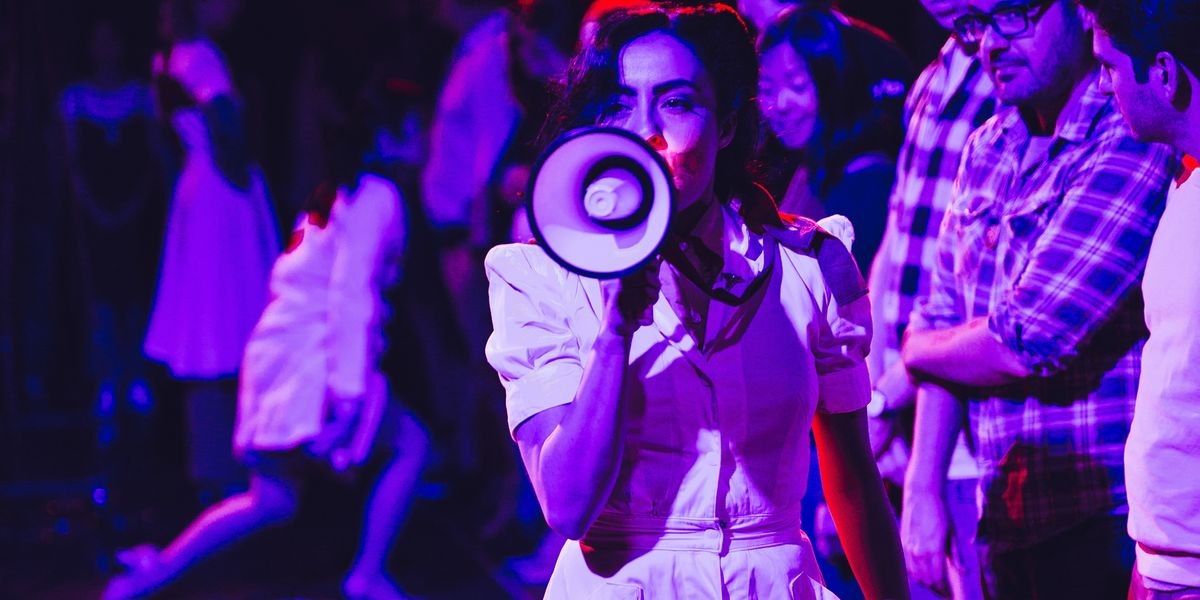What It Really Takes to Be In An Immersive Show
The fourth wall has come down, and it has opened up a whole new kind of gig for dancers. Since Sleep No More became a hit in 2011, immersive theater experiences have been shattering expectations by inviting audiences to move through the world of the performance as they please. What kind of skill set does this burgeoning art form demand?
Project Strategically
The biggest difference between performing on a proscenium stage and dancing in an immersive work is the proximity of the audience. In many cases, spectators will be close enough to literally reach out and touch you. And this brings some unique challenges. First, you can’t play to the top of the balcony, says Danielle Rowe, choreographer for FURY, an immersive concert experience inspired by the film Mad Max: Fury Road. “You’re more of a screen actor than a stage actor when the audience is that close,” she says.
It’s not a given that everyone will be standing in front of you, either, says Alison Ingelstrom, who danced in Ryan Heffington’s immersive World War II–themed Seeing You before joining the cast of the off-Broadway interactive pop musical Cleopatra. “You can’t just project in one direction like you would onstage.”
Start a Movement
Another hallmark of Sleep No More–inspired shows is the audience’s choose-your-own-adventure journey, where performers are sometimes responsible for initiating the movement of the crowd. “You’re not herding cattle and you’re not a flight attendant, so finding a way to camouflage the action and handle it creatively is an interesting challenge,” says Ingelstrom. “It’s better to be clear but to do less—take two people by the arm or put light pressure on someone’s back.”
Grow with the Flow
Since audiences can be unpredictable, working out the kinks may require making changes in the middle of a run. Keone and Mari Madrid, whose immersive Beyond Babel opened last fall in San Diego, debrief with the cast after every performance and incorporate changes often, so dancers need to be flexible as things shift.
Make It Work
A nontraditional set might be located in a less-than-ideal space, says Ingelstrom, so dancers should be prepared to roll with the punches. “There may not be marley, sprung floors or someone handing you your props,” she says.
You will also learn how unpredictable an audience can be once you take away the seats. “You have to be able to recover quickly when the unexpected happens, like if someone sits down when they’re not supposed to or you need to make the movement work in a more confined space,” says Rowe.
Check Your Gaze
Holding prolonged eye contact with an onlooker might make you uncomfortable at first. To get used to this, Ingelstrom started making intentional eye contact in everyday interactions. Locking eyes with castmates in those first few rehearsals was also good practice because they were still practically strangers. “It’s a little embarrassing, but I would try to make eye contact with people on the subway, too,” she says.
Commit Long-Term
Remaining absorbed in the world of the performance helps bring the audience along for the ride—and takes incredible focus, says Rowe. “Our performers are onstage for the entire hour-long show, so having physical and mental stamina is a requirement. You have to be completely in it, no matter what happens.”
Move On
With nonperformers all around you and no way of knowing how they’ll react, you’re bound to make some missteps and have nights when the audience is not responsive, says Ingelstrom. “I had to learn not to hold things so precious, because if you’re punishing yourself for messing up, you’re not present for the audience.” Besides, Rowe says, if you’re fully committed and making choices that are true to your character, how wrong can you be?




